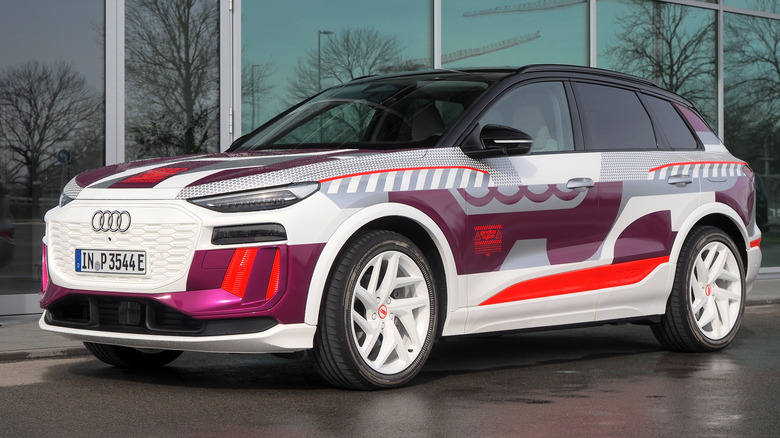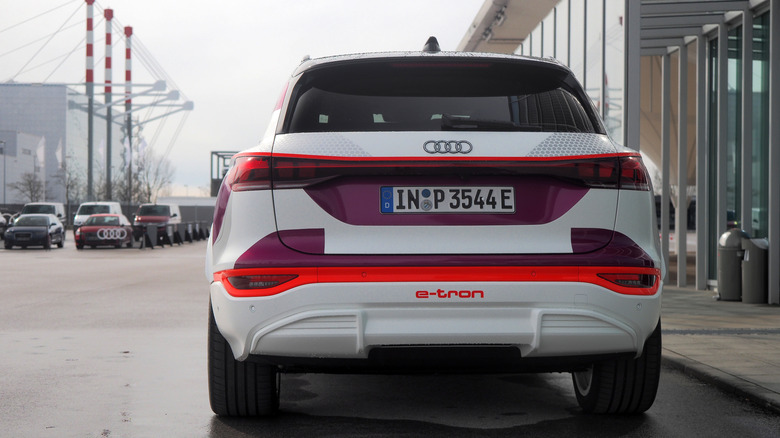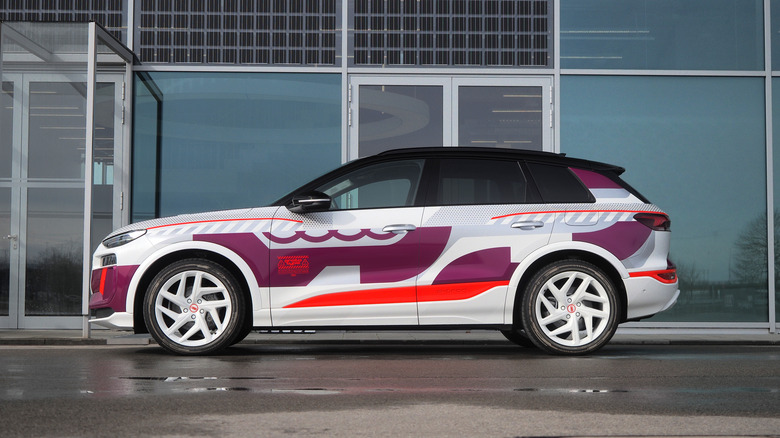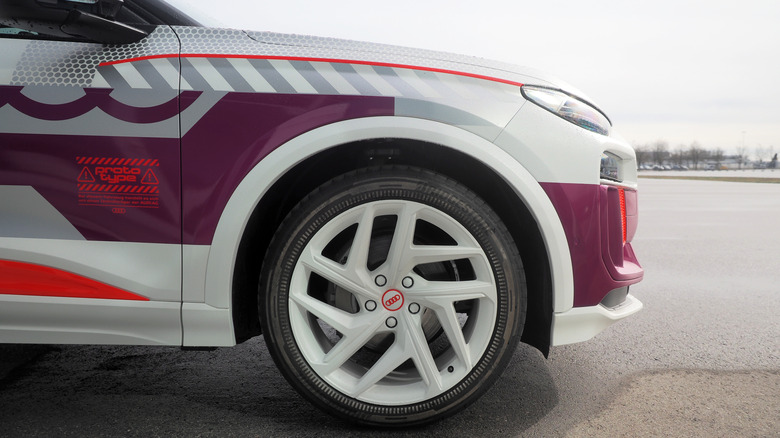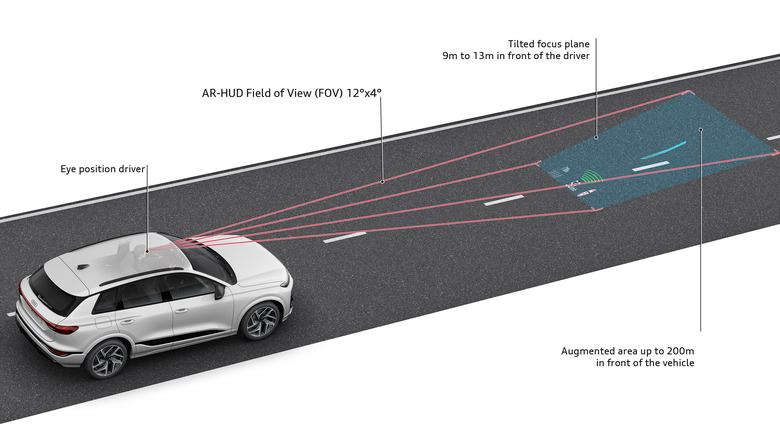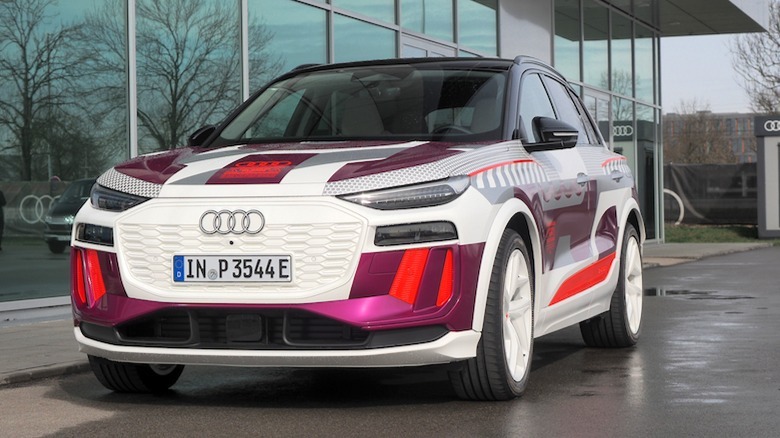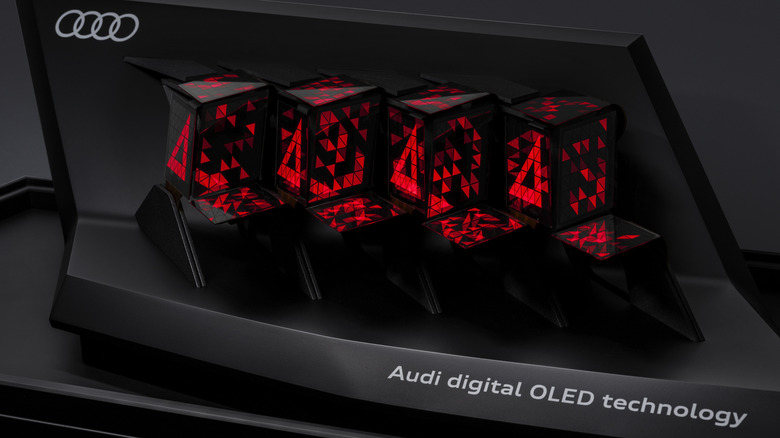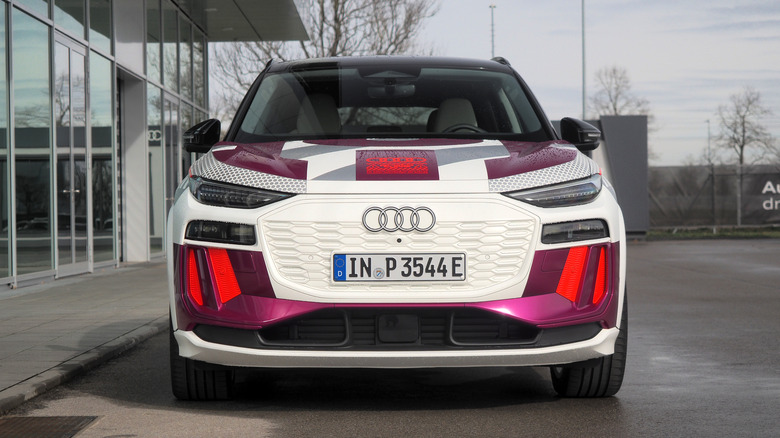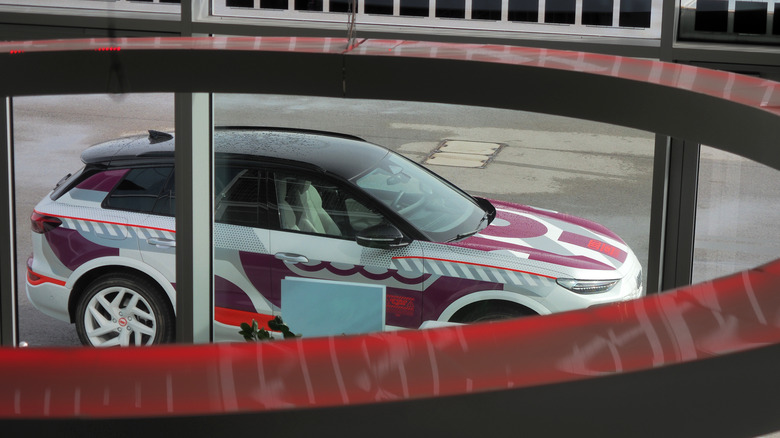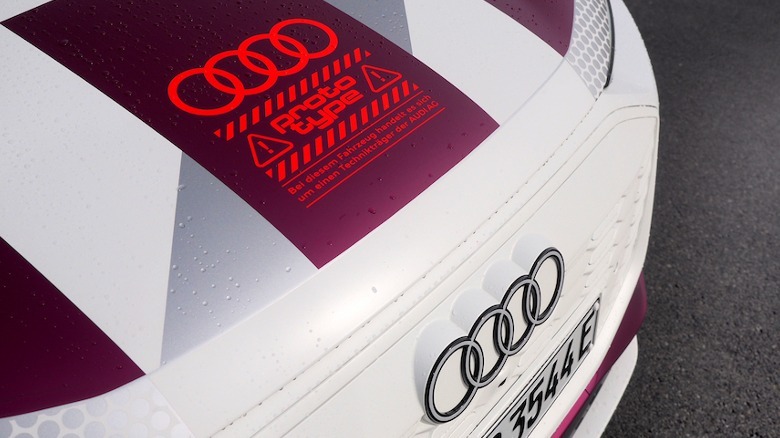We Drove Audi's 2025 SQ6 E-Tron Electric Prototype: Here's What Stood Out
Audi's first electric SUV based on the new PPE platform it co-developed with Porsche promises plenty, with more efficiency, faster charging, and an array of fresh features ranging from the genius to the gimmicky. When Audi offers you the keys to some of its latest Q6 e-tron prototypes, you don't say no.
Out in Munich, Germany, where Audi hosted SlashGear to get a glimpse of what makes the PPE architecture — and its newest EV — special, there was no shortage of reasons why the Q6 e-tron represents a big step forward compared to the current Q4 e-tron we drove back in 2022 and the refined but aging Q8 e-tron it's sandwiched between; significantly faster DC fast charging, for a start, along with more horsepower than even the more expensive EV. On-paper specs can't quite match the experience of getting behind the wheel, though.
With production of the 2025 Q6 e-tron not expected to kick off until summer 2024 — and U.S. spec cars not arriving until the end of the year — it's going to be some time before we can drive a final vehicle. Despite it being too early for a conclusive verdict, though, there are still some takeaways from even a brief spin.
The SQ6 e-tron is fast - and Launch Mode is easy to use
The U.S. will have to wait a little longer for the Q6 e-tron to go on sale, but to help make up for that patience, the North American configuration of the EV will actually be a little more potent. In Europe, the standard Q6 e-tron Quattro will offer 285 kW of power from its dual electric motors, or 382 horsepower. The version coming to the U.S., though, will have 315 kW, or 422 horsepower.
Both of those models and the punchier-still SQ6 e-tron will offer a Launch Mode to coax out maximum pace from a standing start.
To activate Launch Mode, you put your left foot on the brake pedal, press the accelerator all the way to the floor with your right foot, and then lift off the brake. In the SQ6 e-tron, there's a boost mode that pushes past the usual 360 kW e-motor output to 380 kW (510 hp) instead. That's only usable for short periods, but it's more than enough time to test out the EV's 4.3 second 0-60 mph run.
Audi wasn't particularly inclined to let us run time trials on its pre-production cars, but there's no denying that the SQ6 e-tron is a perky beast. The air suspension that comes standard on the SQ6 e-tron — and is an optional upgrade from the steel springs on the regular Q6 e-tron — seems worth having, too. Throwing the EV around Audi's makeshift autocross course demonstrated a noticeable difference in body lean when you jumped from Comfort to Dynamic modes.
The Q6 e-tron hates wasting power
Energy recuperation is key to a successful electric vehicle, avoiding wasting kinetic energy by using the e-motors as generators and feeding power back into the battery. In the case of the Q6 e-tron, there's up to 220 kW of regenerative braking power returned, but it's how the EV manages that — and the traditional, physical brakes — that stands out.
When you first hit the brakes — or lift off the accelerator, depending on what level of regen you have set — the Q6 e-tron uses the e-motor on the rear axle first. That's the most efficient for generating power. If more slowing is required — or the rear e-motor's capacity to generate has reached its max — the front e-motor is used, too. Only once both have topped out their recuperative potential are the physical brakes tapped, first on the front wheels and then on the rear. In fact, Audi claims 95% of typical braking operations can be done with regen alone.
Audi blends regen and physical brakes seamlessly
What stands out, even from a short time at the wheel, is how seamless the transition is between the different methods of slowing. Since it's brake-by-wire — with a backup hydraulic system should the electronics suffer some sort of catastrophic failure — you don't get a specific change in pedal feel as the Audi segues between e-motor and traditional brakes. Still, whether I slammed on the anchors or feathered the slow pedal delicately, the only way I could tell which were being used at any particular time was the dashboard graphics: the end result was always smooth and predictable.
On the driver's display, there's a simple bar to illustrate current recuperation: if it edges over into the gray portion at the end, you know you're using the friction brakes. Swipe through to the Q6 e-tron graphic in the central infotainment screen, though, and not only do you get power and regen mapped in color on top of the front and rear wheels, but the brake calipers light up front and rear, too, according to which system is in play. That's useful if you're trying to maximize recuperation without slipping into physical braking (and thus squandering power you could've potentially returned to the battery).
The AR head-up display is no gimmick
Augmented reality has been appearing in vehicles for several years now, including in the Audi Q4 e-tron, generally building on top of head-up display (HUD) technology to add a little extra depth to the information beamed into the driver's line of sight. Often, that can feel like a gimmick, but Audi's new E3 1.2 electronics architecture and the next-generation HUD in the Q6 e-tron make a big difference in how useful it feels. Partly, that's down to functionality, but also how Audi orients its optional display.
According to the automaker, it's the equivalent of around an 88-inch screen floating out ahead of the EV. By tilting the panel, though, the 1152 x 576 resolution HUD is effectively angled to the driver's field of view: the top edge is positioned further down the road than the lower edge. That allows Audi to play with depth effects up to 650+ feet from the vehicle.
As the speed limit changes, for example, a big speed sign graphic floats down the road ahead. What makes it so effective is how clear those graphics are compared to the real world. The panel has 13,500 nits of brightness — an iPhone 15 Pro's peak is 2,000 nits, in comparison — meaning the digital add-ons can hold their own even in bright sunlight conditions.
Some of Audi's virtual information will be location-based, using GPS and navigation maps. However, the Q6 e-tron's front-facing cameras and other sensors can spot things like pedestrians, bicycles, and potential hazards in real-time, with the AR HUD then flagging them with overlaid graphics. It makes the system a lot more useful than simply showing speed.
Audi's next-gen Matrix LED lighting is incredible
While U.S. spec cars will get the fancy augmented reality head-up display option, what they won't enjoy is the full capabilities of Audi's latest Matrix LED headlamps and new OLED rear light clusters. That's a shame, too, as they're some of the Q6 e-tron's most striking features.
At the front, the Matrix LED headlamps don't just flip between low and high beams but can dynamically adjust the spread of light so as not to dazzle oncoming traffic. The daytime running lights are, in fact, made up of twelve segments each that can be individually controlled to switch between eight different pre-programmed patterns.
The rear clusters, meanwhile, include six OLED panels, each made up of 60 segments. These can also be switched between different preset patterns or to a dynamically changing one that looks a little like a digital fireplace made up of shimmering triangles. If the Q6 e-tron spots a hazard up ahead, it can show a triangle warning symbol on the rear screens instead so as to notify following drivers that there's a potential issue.
Once again, U.S. drivers miss out on the cool lights
Unfortunately, all this lighting runs head-first into American road safety regulations, and while the NHTSA may have changed the rules on active lighting, that hasn't led to the country catching up with technology the rest of the world enjoys. Work-in-progress hurdles in certification mean no automaker has achieved certification yet, and that means U.S. drivers will only get stationary versions of the Q6 e-tron's animated lights.
They'll be able to change the headlamp patterns, for example, but only when the EV is parked and after cycling the power for it to take effect. The same goes for the rear lights: there'll be a frozen version of the animated pattern and no flashing warning triangle when the Q6 e-tron is in motion. It seems faintly ridiculous to still be in this situation — when Audi's first Matrix LED lighting launched all the way back in 2019, and several other automakers now have adaptive headlight tech, too – but the good news is that, if the kinks get worked out in the testing process, U.S. cars will have the hardware already installed. That'll only require a software update to enable the absent features.
Audi's electric roadmap feels far more competitive
While we'll need to wait to find out final U.S. pricing in order to get a complete picture of the Q6 e-tron package, there's no denying that what Audi has put together here feels much more well-rounded compared to its current line-up of EVs. Partly, that's down to factors like improved range and charging rates, as well as the upheaval in the array of cabin technology on offer. Where models like the Q8 e-tron stuck close to Audi's ICE-based formula, an intentional strategy to minimize headaches for those making the jump to all-electric, this new electric SUV embraces its changes instead.
At the same time, it also feels far more competitive in its segment. The Maserati Grecale Folgore, for example, which we also drove for the first time recently, falls short in several ways compared to the Audi. That's despite it being significantly more expensive. The delta between Audi's line-up and rivals like the BMW iX has also narrowed significantly, too.
It's still the early days for PPE, and of course, there's only so much you can tell from a brief spin of a pre-production vehicle. Nonetheless, the Q6 e-tron is more than just business as usual for Audi. While U.S. drivers may miss out on some of the more high-tech magic compared to owners elsewhere in the world, the core premise of the new electric SUV is shaping up to be mighty intriguing.
